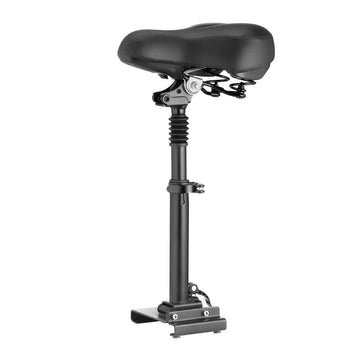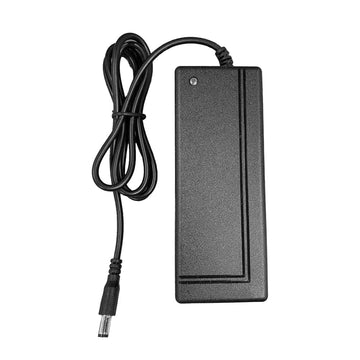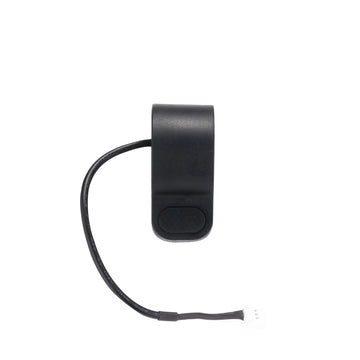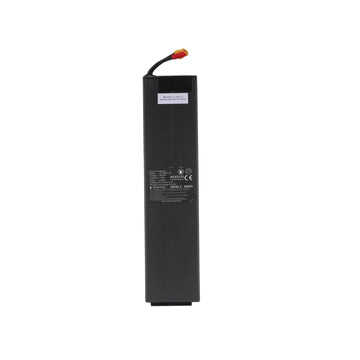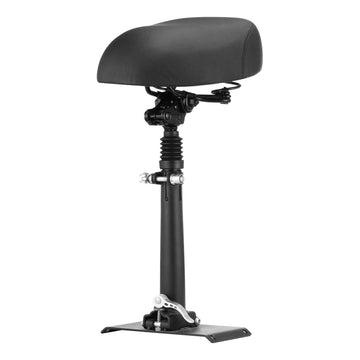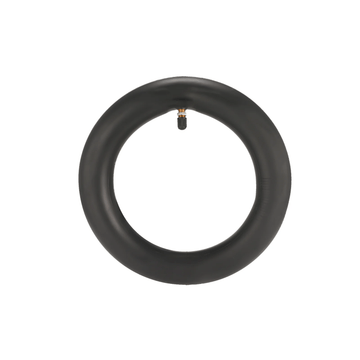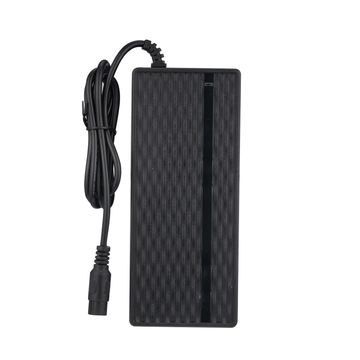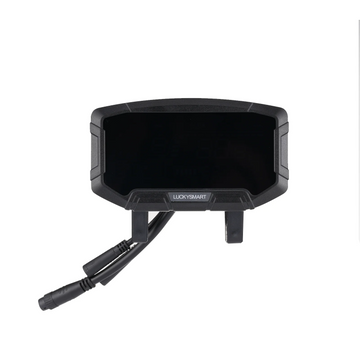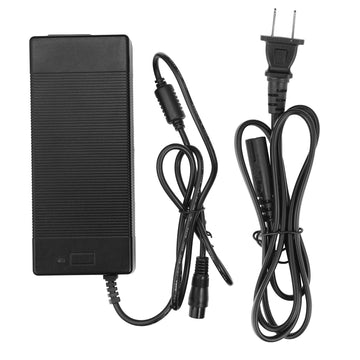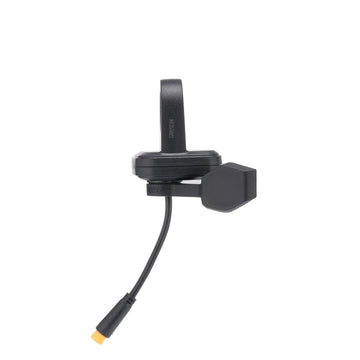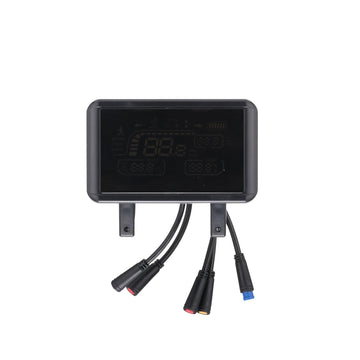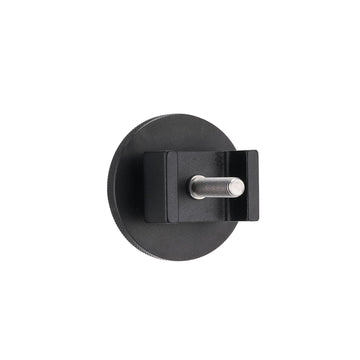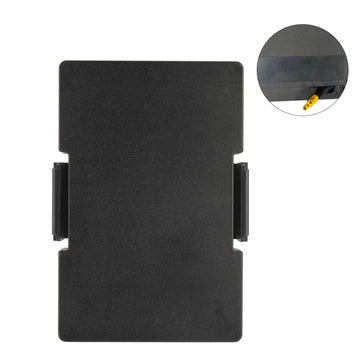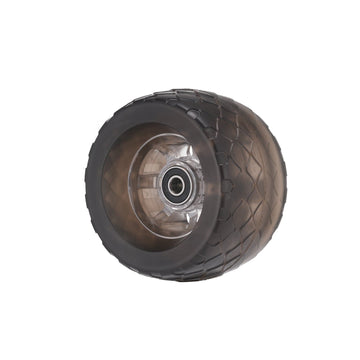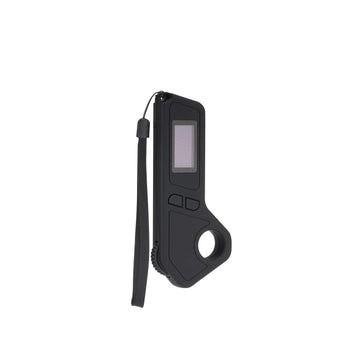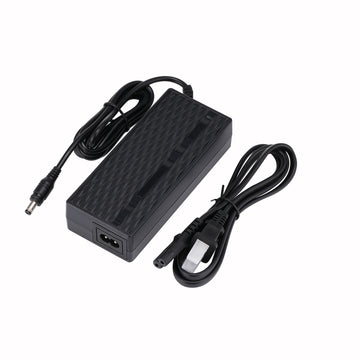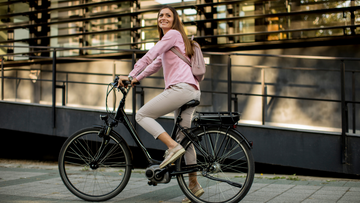
Start your adventure by learning to ride an electric skateboard—a cool upgrade from regular skateboarding. Picking the right board is key to a safe and enjoyable experience. It's different from skateboarding because you use a remote to control it, so you'll need to learn a few new moves.
As a beginner, take it slow, get used to the speed, and practice your turns. As you skate better, remember to stay aware of your surroundings and wear safety gear. With time and practice, electric skateboarding can be a fun way to get around.
Want to learn how to ride electric skateboards? Keep reading to jump into the fun!
Revolutionize your ride with the cutting-edge technology of our motorized skateboards, engineered for those who dare to stand out.
How To Distinguish an Electric Skateboard from a Regular Skateboards

Electric skateboards and conventional ones are both engaging means of transportation, yet they differ significantly in design and function.
Components and Motive Power
Electric skateboards come equipped with an electric motor, setting them apart from their conventional counterparts. This motor allows you to climb inclines and travel longer distances using electric power, minimizing your physical effort.
These boards offer various motor power options, directly influencing both the range and speed at which you can travel.
|
Component |
Electric Skateboard |
Conventional Skateboard |
|
Motor |
Yes (Electric motor) |
No |
|
Battery |
Yes |
No |
|
Remote Control |
Often Included |
Not Applicable |
Control and Experience
Electric skateboards redefine control and experience. Instead of pushing off one foot like on a board without a motor, you use a remote to control the speed.
This remote typically features a throttle that enables precise power management, providing electric skateboarders with a refined level of control behind the front trucks and across the boards' surface.
Performance
Thanks to their electric motors, electric skateboards can reach higher speeds and tackle a wider range of terrains, making your rides not only swifter but also less taxing. Some electric skateboards even include regenerative braking, which recharges the battery slightly as you brake or coast downhill.
The battery life is a key factor in determining the distance you can travel on a single charge, so consider this alongside your riding habits.
As you transition from a conventional skateboard to one with electric power, it's essential to consider how these differences align with your lifestyle.
Electric skateboarders often enjoy the added benefits of the board and the remote, which altogether redefine the convenience and experience of their ride.
Choosing the Right Electric Skateboard for Your Lifestyle
Choosing the right board involves considering several factors such as speed preferences, commuting needs, build quality, and technological features.
A perfect eBoard fits seamlessly with your lifestyle, whether you're using it for fun or as your primary mode of transportation.
Evaluating Speed and Range for Your Needs
When selecting an electric skateboard, key performance indicators to consider are top speed and range.
The top speed of an eBoard is typically between 18-28 mph, but always choose a speed you can safely handle, especially if you're a beginner.
Check out these skateboards:
- Isinwheel V8 Electric Skateboard with Portable Removable Battery & Remote Control
- Isinwheel V6 Electric Skateboard with Remote Control
Regarding range, focus on battery life, which can vary from 7 to 20 miles on a single charge. For longer commutes, a larger battery is essential.
-
Speed:
-
Beginner: Less than 20 mph
-
Experienced: 20-28 mph
-
Range:
-
Short commutes: 7-12 miles
-
Long distances: 15-20 miles
Experience the perfect blend of speed and agility with our expertly designed adult electric skateboards – your next step towards urban commuting excellence.
Understanding Electric Board Construction and Craftsmanship
The construction of an eBoard affects durability and ride quality, so you'll want to pay attention to the deck, trucks, and wheels.
A sturdy deck made of maple or bamboo gives strength and flexibility, while reliable trucks ensure stable turns. The wheels should balance firmness for speed and softness for shock absorption.
-
Deck: Maple or bamboo
-
Trucks: High-quality metal
-
Wheels:
-
Hardness: 78A-90A durometer
-
Size: 80-100mm for balancing speed and control
Tech Savvy: eBoard's Digital Integration
Today's eBoards come with a range of digital features that enhance the riding experience.
Look for a clear LED display that shows your battery level and speed.
Advanced remote control settings allow you to switch between riding modes for different skill levels, and control speed and acceleration more precisely.
-
Digital Features:
-
LED Display: Battery level, Speed, and Riding Mode
-
Remote Control: Adjustable Speed Settings, Ride Modes
Protective Gear for Electric Skateboard Safety
Before you step on your electric skateboard, ensure that you're fully equipped with the proper safety equipment and that your board is in prime condition for a secure ride.
Selecting Safety Equipment
Helmet: Choosing a well-fitting helmet is crucial. It should sit snugly on your head without wobbling and have a certified safety rating. Consider helmets designed specifically for skateboarding.
Protective Gear:
-
Wrist Guards: Secure your wrists with guards to prevent sprains or fractures.
-
Elbow and Knee Pads: Wear pads to protect these joints from scrapes and impacts.
Always opt for high-quality safety gear that meets industry standards.
Upgrade and personalize your electric skateboard with our top-quality e-skateboard accessories, where functionality meets style.
Inspection and Calibration
Settings and Hardware:
-
Trucks: Check that your trucks are adjusted to your weight and riding style. Too loose and you may wobble; too tight and you'll struggle to turn.
-
Battery: Ensure the battery is fully charged and properly seated in its compartment.
Board Balance and Calibration:
-
Inspect and test the board's balance, ensuring it aligns with your stance and center of gravity.
-
Calibrate the board's settings according to the manufacturer's guidelines.
How To Ride an Electric Skateboard: Master the eBoard Basics
To excel in riding an electric skateboard, it's crucial to understand the foundational aspects: proper stance selection, essential riding techniques, and effective braking practices.
These core elements are the groundwork for safe and controlled eBoarding, preparing you for every ride and ensuring you can handle your board across varying terrains.
Skateboard Stance: Regular or Goofy
Your stance on an electric skateboard determines your balance and control, which is essential to always ride safely. For those new to skateboarding, let's teach you how to ride with the right posture.
If you're a beginner looking forward to your first ride, you'll need to determine whether you're Regular (left foot forward) or Goofy (right foot forward). Long-time skateboarders might already have a preference, but if you're just starting, you'll quickly get a feel for what's comfortable for you.
To find your stance, try sliding across a smooth surface; the foot you naturally put in front is likely the one you'll place at the front of the board when you learn how to make turns.
Place your front foot diagonally across the board just behind the front trucks, toes pointing where you intend to travel.
Your front foot should be near the front trucks and angled forward to point in the direction you want to go, while your back foot should be perpendicular to the side of the board, enabling you to push you from behind when kick pushing.
Fundamentals of Riding and Turning
Balancing on your skateboard involves keeping a low center of gravity with your knees slightly bent, which might feel more stable as you lean forward.
When you're ready to accelerate, rather than using a foot on the ground to kick push, use the remote to gradually increase speed. This prevents sudden thrusts that can throw off your balance.
To turn, shift your weight subtly; lean gently into your toes for toeside turns, or transfer your weight to the back and press into your heels for heelside ones.
For effective maneuvering and carving, these weight shifts should be smoothly combined with progressive steering in the front wheels, guiding you in the path ahead.
Regular practice will not only improve your balancing and turning skills but will also enhance your overall ability to ride an electric skateboard safely.
Foot Braking Techniques and Safety
Developing riding skills includes learning how to slow down and stop, and for electric skateboards, this often means mastering remote-controlled braking.
If your board has a foot braking system, you'll learn to gently place your foot on the ground to apply pressure and slow down.
For remote braking, to avoid abrupt stops that disrupt your balance, pull back on the throttle gradually.
During your first ride, it's important to maintain a posture that allows for quick weight adjustments, keeping your weight forward for stability as you slow down.
Always maintain a stance that allows you to lean forward and adjust quickly, which will give you better control over your speed and the ability to turn safely.
It's recommended to practice these braking techniques on a safe and smooth surface, ensuring you're able to ride with confidence before making every journey or facing different terrains.
Also read: Post-Skateboarding Blues: Understanding Muscle Soreness
Electric Skateboarding Techniques and Tricks
Elevating your electric skateboard skills involves mastering advanced tricks and techniques that not only enhance your ride but also display your proficiency and agility.
Performing Basic to Complex Tricks
As an advanced rider, your ability to transition from basic skills to complex tricks is paramount. The foundational trick, the ollie, is where you and your board leap into the air without the use of hands.
Patience and practice to build momentum are key as you progress to tricks like the kickflip—where the board flips under your feet.
To build on these skills:
Ollie:
-
Begin by bending your knees.
-
Snap the tail of the board down while sliding your front foot up towards the nose.
- Practicing to get the right timing and height is essential.
Kickflip:
-
Set up like an ollie.
-
Kick your front foot out and flick the edge of the board to initiate the flip.
- Catch the board with your back foot and land with both feet.
Work on the manual, where you ride on the back wheels for an extended period, to enhance your balance.
Adventures in Speed: Learning to Ride Fast
Riding fast requires a deep understanding of your board’s dynamics and the ability to react swiftly to changing terrains, especially when accelerating downhill. To safely increase your speed:
-
Keep your head up and anticipate your path.
-
Practice downhill runs to get familiar with higher speeds in a controlled manner.
-
Always be in tune with your board and surroundings to control speed and navigate effectively.
Train yourself to use slight body shifts to drift and efficiently handle sharp turns or navigate around obstacles.
How To Fall With Minimal Fallout

When riding an electric skateboard, anticipating falls and knowing how to handle them can significantly reduce the risk of injury. Here are the key steps you should take to protect yourself in case of a fall:
Wear Safety Gear
When riding an electric skateboard, it’s crucial to be prepared for the unexpected. One of the most effective ways to reduce the risk of head injuries is to wear a helmet every time you ride. It's the most essential piece of safety gear, especially when traveling at high speeds, and can make a significant difference in preventing serious injuries during a fall.
Keep Knees Bent
To maintain control and balance, keep your knees slightly bent while riding. This position not only helps with absorbing shocks and bumps but also makes it easier to react quickly if you start to lose balance.
The lower center of gravity will aid in stability, which is especially important at higher speeds.
Proper Way to Stand
When you stand on your board, make sure you're in a feet shoulder-width apart position for a sturdy stance. This will offer you greater control and allow you to distribute your weight forward easily when needed. To apply pressure effectively for turns or to slow down, having a solid stance is key. Remember, the way you stand and shift your weight can be the difference between a smooth ride and a fall.
Learn to Roll
Learning to roll when you fall helps distribute the force of the impact across your body instead of taking it all on one point. To do this, tuck in and aim to roll sideways when you hit the ground. This technique, combined with wearing a helmet and other protective gear, and keeping your knees slightly bent while riding, can minimize your risk of injury on an electric skateboard.
Tuck into a roll sideways to distribute the impact across a larger area of your body. This technique lessens the chance of a severe injury and can make a significant difference in the outcome of the fall.
Safety First: Gear and Accessories for the Ultimate eBoard Experience
Equipping yourself with the right e-skateboard accessories can significantly enhance your experience. These essentials not only improve your safety but also provide convenience and customization.
|
Safety Gear |
Purpose |
|
Helmet |
Head protection from injuries |
|
Elbow Pads |
Protects elbows upon impact |
|
Knee Pads |
Cushions knees |
|
Wrist Guards |
Supports and guards wrists |
Safety Gear
-
Helmet: Your head is vulnerable during falls, so a robust helmet is indispensable.
- Protective Pads: Elbow and knee pads cushion the impact on joints, while wrist guards protect your hands during spills.
Get the complete set: Isinwheel Full Protective Gear Set 7-Pieces Pads Knee Pads Wrist Guards Multi-functional Sport Helmet
Visibility and Portability
-
Lights: Ensure you're seen during evening rides with attachable lights. Being visible is critical for your safety.
-
Transportation Bag: A portable carrier for your eBoard simplifies transportation when you're not riding.
Control and Customization:
-
Remote: Keep your eBoard's remote in comfortable reach. It's the key to regulating your speed and braking effectively.
-
Grip Tape: For an alternative style and improved traction, consider customizing with grip tape.
Community and Culture: Riding Together
Electric skateboarding isn’t just a solo activity; it’s a sport that thrives on community engagement and group experiences.
The culture surrounding electric skateboards is as much about the shared joy of riding as it is about the individual thrill.
- Community:
-
Building camaraderie
-
Sharing tips and tricks
-
Organizing events
The joy of riding together in a group creates a sense of community.
Group rides allow you to share experiences and explore new areas.
They can range from casual gatherings to more structured events with routes and meet-ups.
When you ride with others, you not only get to enjoy the company but also learn from one another.
-
Share Experiences:
-
Swap stories and highlight favorite rides
-
Provide support and encouragement
By joining an electric skateboard community, you embrace an avenue to share experiences and sportsmanship.
Whether troubleshooting a tricky maneuver or celebrating a perfect ride, the collective knowledge and energy foster an encouraging environment.
-
Group Rides:
-
Scheduled meet-ups
-
Diverse skill levels welcomed
-
Route planning for safety and enjoyment
Group rides often feature a mix of skill levels, ensuring that both beginners and advanced riders can join.
Advanced riders can offer guidance, while beginners add fresh enthusiasm to the group.
-
Sportsmanship:
-
Encouraging each other
-
Riding responsibly
-
Celebrating achievements together
Riding together fosters a high level of sportsmanship where members encourage each other to ride responsibly and safely.
Celebrations of personal milestones and achievements are common, reinforcing the bonds within the community.
Conclusion: Ride an Electric Skateboard Like a Pro!
Electric skateboarding isn't just about zipping around; it's a great way to get around and join a community, allowing you to grow your skills safely. The thrill of the ride enhances everyday travels and connects you with other riders who share your passion.
When you're ready to start riding your electric skateboard, remember that electric skateboarding is an inclusive activity, suitable for both those who have just purchased their first electric skateboard and those aiming to improve their skills.
Always put safety first, keep learning, and enjoy the rush of speed with care. Why not try an Isinwheel electric skateboard for a reliable and enjoyable ride? Gear up, join in, and let the good times roll with skateboarding.
Frequently Asked Questions
Is an electric longboard different from an electric skateboard?
Yes, an electric longboard is different from an electric skateboard in a few ways. Longboards are generally longer, which allows for more stability and a smoother ride, making them a preferred way to get around town for many.
They are also better suited for cruising and can handle higher speeds with more stability due to their longer wheelbase. Electric longboards may offer a different experience with more foot space and a slightly different riding style compared to the more agile and trick-oriented electric skateboards.
Can you ride an electric skateboard like a normal one?
You can certainly use an electric skateboard as a normal one, but there are differences. Electric skateboards are a versatile way to get around, and while they're designed to be powered by an electric motor, you can push them just like a regular skateboard when needed.
However, due to the additional weight from the battery and motor, they might not be as nimble as non-electric skateboards, and you may experience some resistance from the motor when pushing it manually.
Can you make your own electric skateboard?
Yes, you can make your own electric skateboard, which can be an exciting project for those with technical know-how. Enthusiasts often build DIY electric skateboards by attaching a motor, battery, and electronic speed controller to a standard skateboard deck.
This process allows for a lot of electric skateboards customization in terms of power, range, and design. That said, building an electric skateboard requires knowledge of electronics and mechanical systems, as well as a commitment to safety during the build process, so it's better to get one from a trusted brand.
Do you have to charge an electric skateboard?
Charging an electric skateboard is necessary as it relies on a battery to function. Like any other rechargeable electronic device, an electric skateboard needs to be regularly charged to ensure it has enough power for your rides.
Depending on the model, an electric skateboard can have varying battery life, and some even feature regenerative braking, which helps put energy back into the battery while you slow down or go downhill.
Can electric skateboards slow down?
Electric skateboards are designed with braking systems that allow you to slow down effectively. The electronic speed controller (ESC) within the skateboard works with the electric motor to reduce your speed when you apply the brake via the remote control.
In addition to friction brakes, many electric skateboards have regenerative braking systems that convert the energy generated during deceleration back into the battery, extending your ride. This feature not only helps in slowing down the board but also aids in energy efficiency, particularly beneficial for urban riders and pedestrians sharing the space.




























